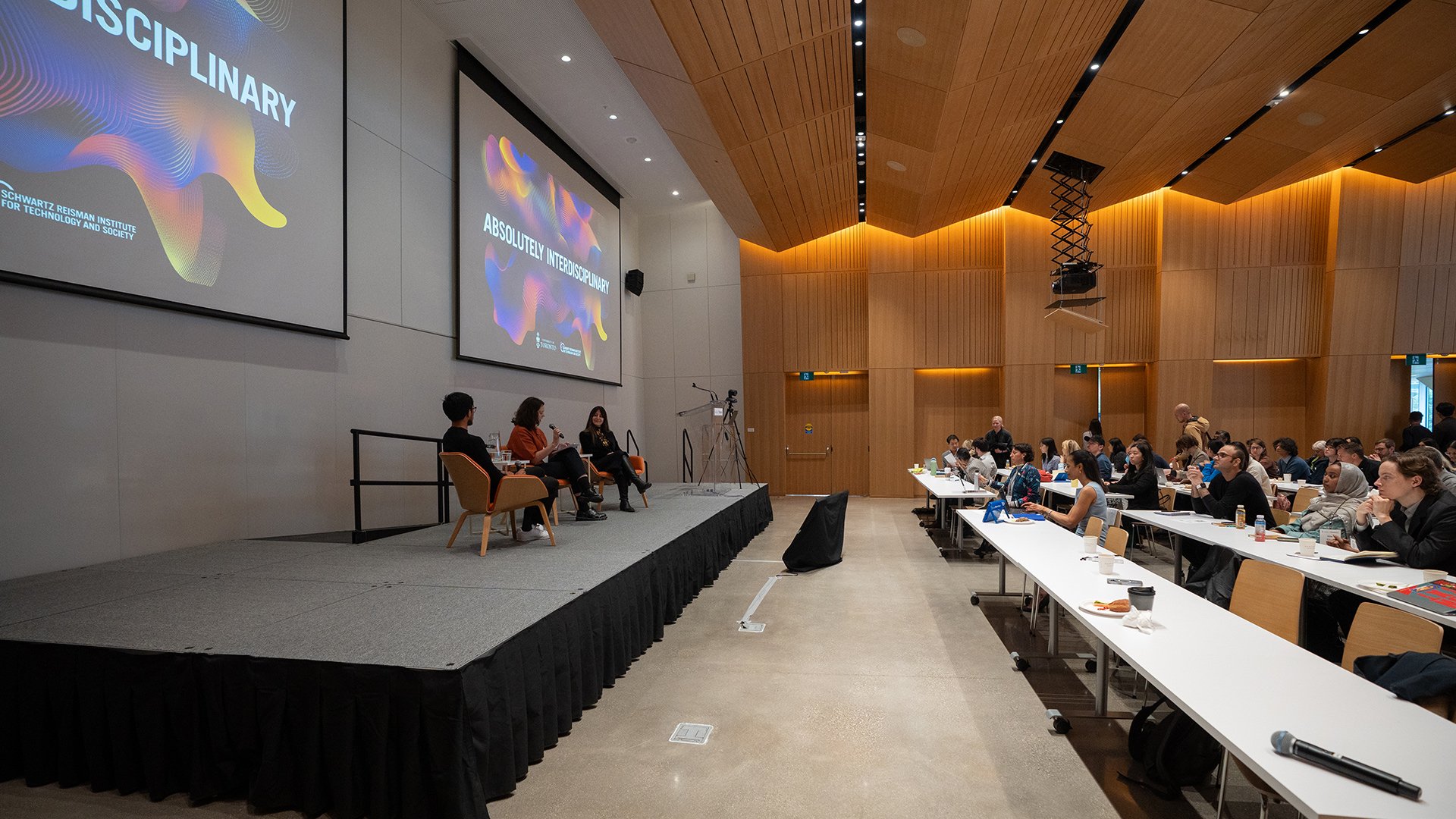Marlène Koffi: Canada’s internet connection is lagging
Canada’s ongoing internet-connection crisis has highlighted and exacerbated many existing social inequities during the COVID-19 pandemic, writes Schwartz Reisman Institute Faculty Affiliate Marlène Koffi in a new op-ed for The Globe and Mail.
In a new op-ed for The Globe and Mail, Schwartz Reisman Faculty Affiliate Marlène Koffi describes how the COVID-19 pandemic has generated a crisis of equitable access when it comes to Canadians’ use of the internet.
“The pandemic has highlighted and exacerbated many inequities, including access to a stable, high-speed internet connection – which now, more than ever, sits at the heart of all our daily activities, from work and school to leisure and health care,” Koffi observes. “This digital divide is growing, with the population fragmenting between those with a reliable broadband internet connection and those who face difficult barriers or painful lag in trying to access this essential service.
Koffi notes that this gap was well-documented prior to the onset of the pandemic: “More than half of rural Canadian households had already reported download speeds below the Canadian Radio-television and Telecommunications Commission’s (CRTC) national target of 50 megabits per second (Mbps), while two-thirds of First Nations communities declared the same.” However, she observes, “It is only now that we’re coming to realize that Canadians living in cities are facing similar challenges,” evinced by a recent report from Ryerson University’s Brookfield Institute, which found that more than a third of Toronto households experience the same connectivity issue.
Koffi argues that to evaluate new public policy options to correct this barrier of access, government must first update its data collection methods. “[I]f we were able to evaluate the needs correctly,” Koffi contends, “it wouldn’t have taken so long for officials to realize that there are internet issues in our cities… despite the government’s efforts, the data remains a somewhat coarse aggregation and the numbers are not updated frequently; surveys are also costly.”
For Koffi, the key to unlocking equitable internet access for all Canadians is found within investments that build collaborative partnerships between public and private sectors, and encourage initiatives on a local level. She proposes solutions can be explored through collaborations between government and companies already leveraging Big Data, such as Microsoft, which used its databases to identify a significantly larger percentage of Americans lacking broadband internet access than official figures that were reported by the U.S. government in 2018. Such collaborations, Koffi argues, “would allow Canadians to have access to more precise, granular and high-frequency data, incurring lower costs in the long run.” Partnerships between various levels of government could also support this process, for instance, schools could help identify vulnerabilities among their students.
As Koffi observes, this issue is not one that will subside after the end of the pandemic. “The new normal […] is likely to involve more remote or online activities. If no straightforward solution is found, the coming years will be characterized by accelerating inequality between different segments of the population, with growing gaps in income and access to knowledge and health services. Many already vulnerable citizens will find themselves in an even more precarious state – and we must summon the bandwidth to help.”
➦ Read the complete text on The Globe and Mail website, published April 19, 2021.
Marlène Koffi is an assistant professor in the Department of Economics at the University of Toronto and a faculty affiliate at the Schwartz Reisman Institute for Technology and Society.








